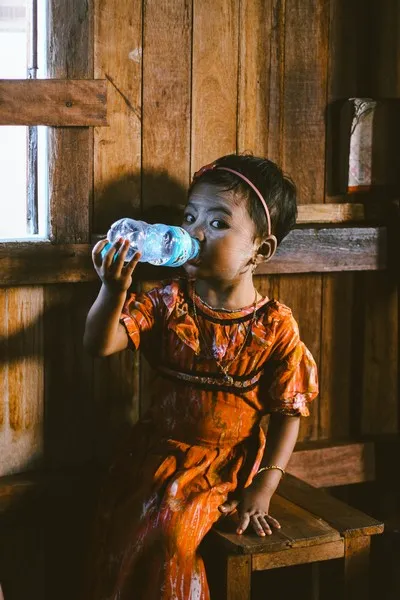Table of Contents
- Defining Relative Poverty
- The Historical Development of the Concept of Relative Poverty
- Measuring Relative Poverty
- Social and Psychological Implications of Relative Poverty
- Relative Poverty and Social Exclusion
- Addressing Relative Poverty: Policy Implications
- Conclusion: The Importance of Understanding Relative Poverty
Relative poverty is a central concept in sociological discussions around inequality and social welfare. While poverty is often associated with an absolute lack of resources, relative poverty considers an individual’s or group’s economic position in relation to the broader society. This perspective on poverty is crucial because it acknowledges that poverty is not just about survival but also about the ability to participate fully in societal activities and attain a socially acceptable standard of living. Understanding relative poverty can provide insight into how societies structure themselves, who is excluded, and the consequences of such exclusion.
Defining Relative Poverty
Relative poverty is distinct from absolute poverty, which measures poverty based on a fixed threshold of income or resources necessary to meet basic physical needs, such as food, water, and shelter. Relative poverty, on the other hand, defines poverty in relation to the society in which a person lives. It considers an individual’s income or resources compared to the average standard of living within their community.
Relative poverty is typically measured as a percentage of the median income within a specific country or region. For instance, those whose income is less than 60% of the median income in a given society are often classified as experiencing relative poverty. This threshold varies from country to country, and even within regions, reflecting differences in living standards and social expectations.
Relative poverty highlights that being poor is not only about having limited means to survive but also about being unable to attain the lifestyle deemed “normal” by society. This inability to participate fully in societal activities can lead to social exclusion and contribute to a cyclical, intergenerational pattern of poverty.
Relative vs. Absolute Poverty
While absolute poverty remains an essential measure, particularly in developing regions where survival needs may still be unmet, relative poverty is increasingly significant in wealthier countries. Developed nations often experience less absolute poverty due to more extensive social safety nets, but relative poverty remains prevalent, revealing disparities between different social classes.
Absolute poverty measures offer insight into the minimum standards needed for physical survival, while relative poverty illuminates issues related to social justice, equality, and well-being. By using relative measures, sociologists can explore how income disparities affect individuals’ quality of life, self-esteem, and social mobility, all of which are crucial for understanding inequality in affluent societies.
The Historical Development of the Concept of Relative Poverty
The concept of relative poverty has its origins in the early sociological work of scholars such as Max Weber and Georg Simmel, who examined how social inequality affects individuals’ life chances and social cohesion. However, it was in the 20th century, particularly with the work of British social researcher Peter Townsend, that relative poverty became a more formally recognized measure.
Townsend argued that poverty could not merely be understood in absolute terms, as it fails to capture the complex social dynamics of deprivation. He asserted that individuals are impoverished if they lack the resources to participate in the norms of their society, regardless of whether their basic survival needs are met. Townsend’s work highlighted that poverty involves not only a lack of resources but also an inability to participate in common social and cultural practices.
The Role of Social Context in Defining Poverty
One of the core arguments in the sociology of poverty is that poverty cannot be understood in isolation from the surrounding social context. What is considered poverty in one country may not be seen as poverty in another, reflecting differences in cultural expectations, income distribution, and social policies. This understanding challenges the idea of a universal poverty line and encourages a more nuanced view that considers each society’s unique characteristics.
The contextual nature of relative poverty highlights the importance of sociological research in poverty studies. Sociologists investigate how poverty thresholds are defined, who falls below them, and what this signifies in terms of social inclusion and exclusion. By doing so, they contribute to more culturally sensitive and relevant poverty policies that aim not only to reduce material deprivation but also to improve social cohesion and equal participation.
Measuring Relative Poverty
Median Income Thresholds
The most common method of measuring relative poverty is by calculating the percentage of the population that falls below a certain percentage of the median income. The median income is often used as it reflects the middle point of a country’s income distribution and is less skewed by extremely high or low incomes than the mean income.
For instance, if the median household income in a country is $50,000, those earning less than $30,000 (60% of the median) would be classified as experiencing relative poverty. This approach provides a dynamic understanding of poverty that adjusts with changes in income distribution, thereby offering a contemporary view of inequality.
Advantages and Criticisms of Median-Based Measures
Using the median income as a benchmark allows for a comparative and evolving measure of poverty. It accommodates economic shifts, ensuring that poverty measures remain relevant even as the economic landscape changes. However, this method also faces criticism. One limitation is that it does not account for variations in living costs across different regions within the same country, potentially underestimating or overestimating poverty levels depending on local living conditions.
Another criticism is that the median-based approach may mask the experiences of those who fall just above the poverty line but still struggle with limited resources. This phenomenon is sometimes referred to as the “near-poor” or “working poor” group, who may not be classified as poor by official measures yet still lack economic security.
Social and Psychological Implications of Relative Poverty
Get the full article AD FREE. Join now for full access to all premium articles.
View Plans & Subscribe Already a member? Log in.




